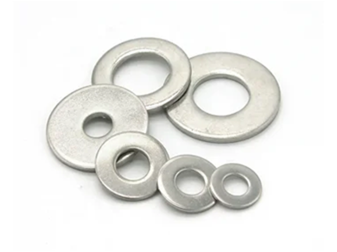Там . 09, 2024 05:45 Back to list
Guide to Understanding Anchor Bolt Dimensions and Sizes in Millimeters for Construction Projects
Understanding Anchor Bolt Sizes in Millimeters
Anchor bolts are critical components in construction and engineering, providing essential support for structures such as buildings, bridges, and machinery. These bolts are designed to anchor structures securely to their foundation, preventing movements caused by environmental forces like wind, earthquakes, and vibrations. When discussing anchor bolt sizes, especially in millimeters (mm), it's important to understand their significance, classification, and application.
Importance of Anchor Bolt Sizes
Sizing is crucial when selecting anchor bolts, as it directly affects the structural integrity and safety of the construction. The diameter and length of the anchor bolt determine its load-carrying capacity, with larger bolts typically able to support greater loads. Proper sizing also ensures that the bolt fits correctly into the corresponding hole or embedment in concrete or masonry, contributing to a safe and stable connection.
Common Anchor Bolt Sizes
Anchor bolts come in a wide range of sizes, typically categorized by their diameter and length. In millimeters, standard diameters often range from 10 mm to 36 mm, although custom sizes may also be available depending on specific project requirements. For instance
- 10 mm to 12 mm Generally used for light-duty applications, suitable for securing lighter structures or fixtures. - 16 mm to 20 mm Commonly used for medium-duty constructions, such as residential buildings or smaller commercial projects. - 24 mm to 30 mm These sizes are typically employed in heavy-duty applications, supporting significant structural elements such as large steel frames or machinery. - Above 36 mm For extremely heavy loads, such as high-rise buildings or large industrial installations, oversized anchor bolts are essential.
Each size not only follows specific loading standards but also correlates with standards set by various international and regional codes, ensuring consistency and safety in engineering practices.
anchor bolt sizes mm

Material Considerations
In addition to size, the material of the anchor bolt plays a crucial role. Common materials include carbon steel, stainless steel, and even galvanized steel. Stainless steel bolts are preferred in corrosive environments due to their resistance to rust and degradation. The choice of material often depends on the environmental conditions of the construction site, including exposure to moisture, chemicals, or extreme temperatures.
Installation Factors
Proper installation of anchor bolts is vital for the performance of the connection. The size of the bolt must match the hole or embedment size accurately, preventing any issues such as shearing or bending under load. Additionally, the embedment depth must also be considered; deeper embedment typically increases the load capacity. It's also crucial to follow the manufacturer's guidelines when installing anchor bolts, including using the correct torque specifications to avoid under-tightening or over-tightening.
Standards and Regulations
Different countries may have specific standards governing the size and use of anchor bolts. For example, the American Concrete Institute (ACI) and the International Organization for Standardization (ISO) provide guidelines that help engineers and contractors select the appropriate anchor bolt sizes based on structural requirements. Familiarizing oneself with these standards is paramount for compliance and ensuring the safety of the construction.
Conclusion
In conclusion, understanding anchor bolt sizes in millimeters is essential for successful construction and engineering projects. By considering factors such as load capacity, installation requirements, and environmental conditions, engineers can select the most appropriate anchor bolts for their applications. The right choice not only enhances the structural integrity of buildings and machinery but also ensures safety, reliability, and longevity in construction. As technology advances, we can expect innovations in materials and designs, leading to even more effective anchor solutions in the future.


